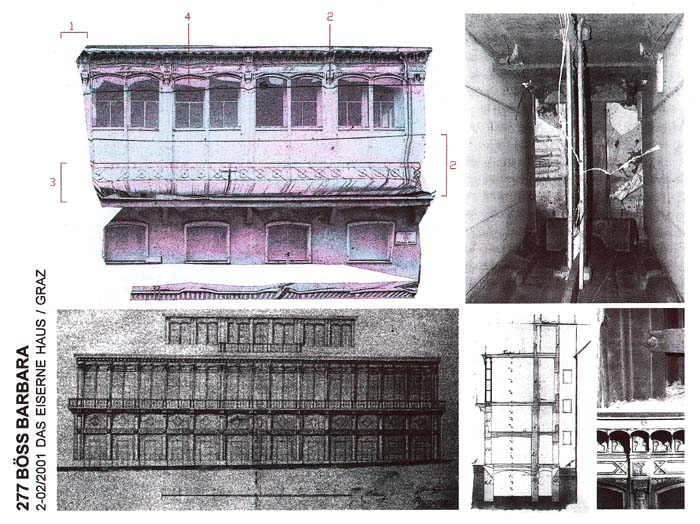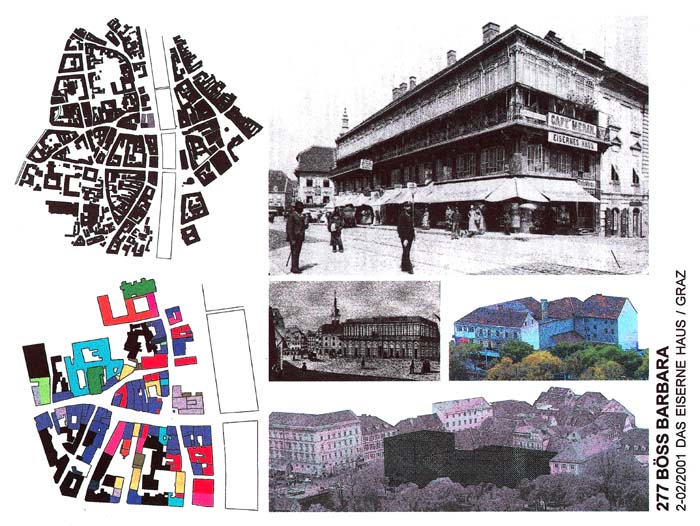| Betreuung von Diplomarbeiten
Holger Neuwirth Beispiele |
| Betreuung von Diplomarbeiten
Holger Neuwirth Beispiele |
277/2-02/2001 Böss Barbara 
Das Eiserne Haus In meiner Diplomarbeit wird eine Analyse des Eisernen Hauses am Südtirolerplatz in Graz vorgenommen und untersucht, welche Teile des Objekts noch dem Originalzustand entsprechen, welche Bedeutung das Gebäude zu seiner Entstehungszeit und heute in Europa, Österreich und Graz hat. Die Diplomarbeit beginnt mit einem geschichtlichen Überblick über den frühen Eisenbau anhand von Beispielen (Brücken, Türme, Zweckbauten...). Die Entwicklung der Murvorstadt wird beschrieben, wobei noch besonders auf den Standort des Eisernen Hauses, den Südtirolerplatz (früher Murplatz) eingegangen wird. Weiters folgt eine Analyse der Baugeschichte des Eisernen Hauses anhand alter Pläne und Fotos. Zur Dokumentation des Ist - Zustandes wurden in Zusammenarbeit mit dem Institut für Angewandte Geodäsie/Abteilung Photogrammetrie und Fernerkundung der TU Graz die Fassaden des Gebäudeensembles photogrammetrisch erfasst und ausgewertet. Die Methode der Architekturphotogrammetrie und ihre Bedeutung für die Dokumentation von Bauwerken werden ebenfalls behandelt. Den Abschluß der Diplomarbeit bildet der Vorschlag für ein städtebauliches Konzept für das Ensemble zwischen Südtirolerplatz, Mariahilferstraße, Kosakengasse und Lendkai. 
The Iron House In this diploma thesis I want to analyse the so called „Eiserne Haus" ("the iron house") located at the Südtirolerplatz (formerly Murplatz) in Graz. I want to examine which parts of the building date back to the original structure. Furthermore, the importance of the object through time and its architectural significance for Europe, Austria and Graz are pointed out. First, I'd like to give a brief overview of the tradition of European iron construction in the 19th Century (bridges, high - rise buildings,…); Second, an outline of the development of the western suburb of Graz - "the Murvorstadt" - with special focus on the location of the "iron house" is given. An analysis of the development of the building - which was done by use of old photographs and building plans - is provided. Third, the present state of the building - the facades especially - are being documented in cooperation with the Institute of Applied Geodesy Department for Photogrammetry and Remote Sensing of the TU of Graz. The method of architectural photogrammetry and its importance for the documentation of buildings in general is also being treated. Finally, I want to propose an innovative town planning concept for the area between Südtirolerplatz, Mariahilferstraße, Kosakengasse und Lendkai.  |
|
|
|